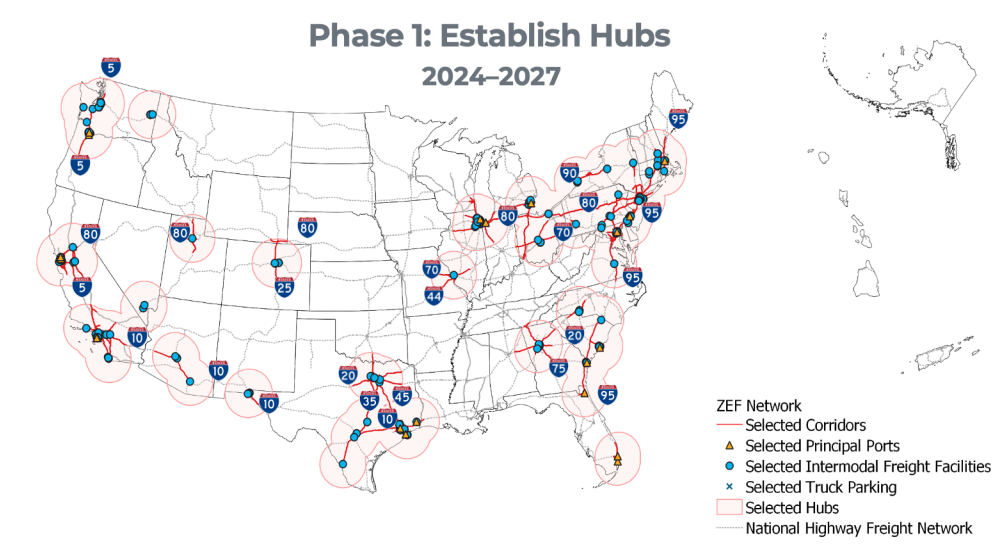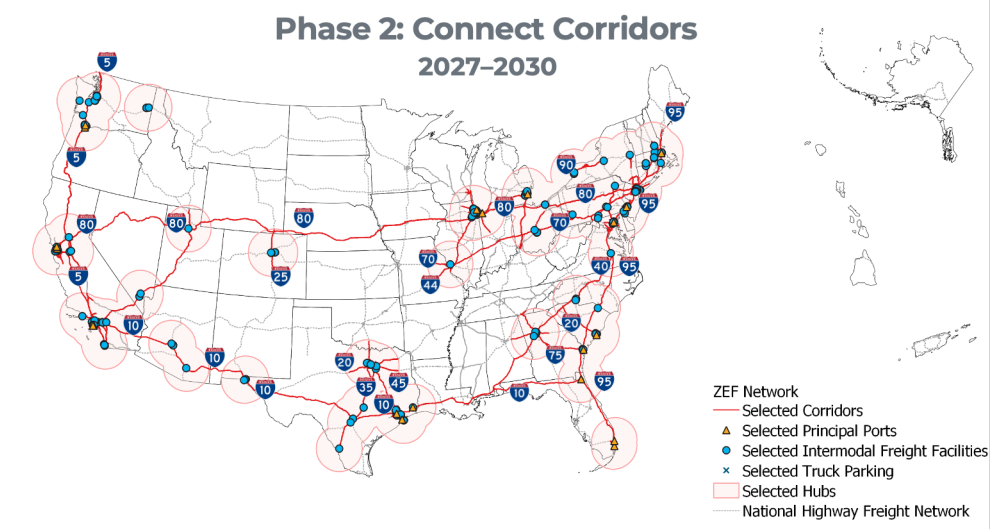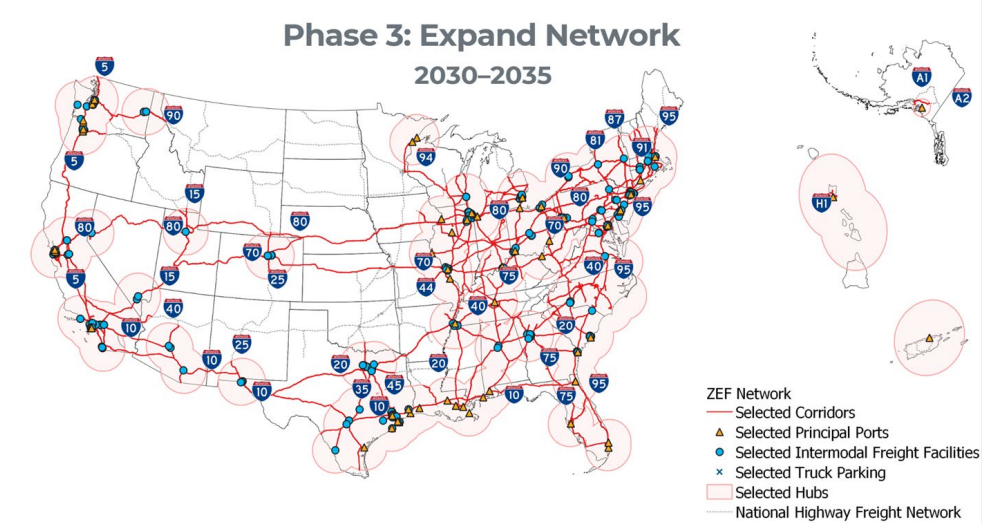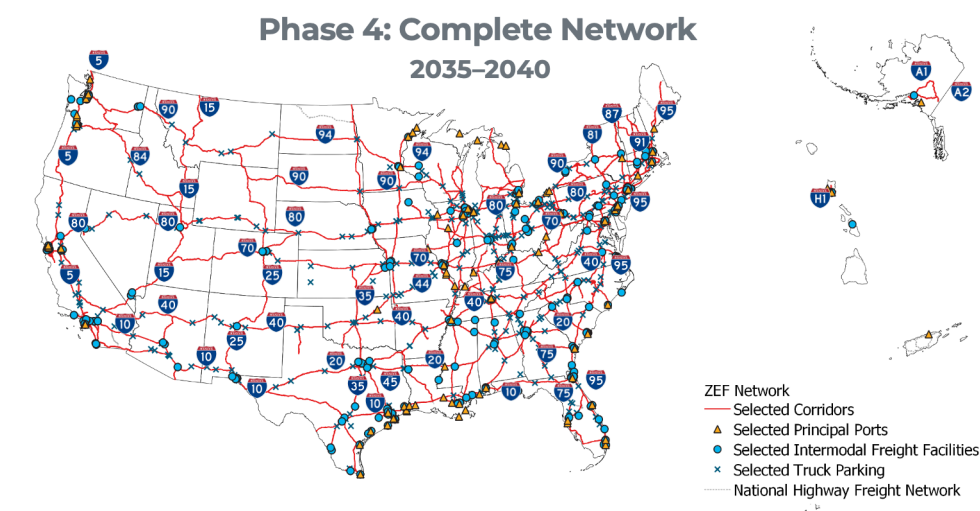Biden administration releases plan addressing charging infrastructure for zero-emission trucks
Addressing the lack of charging infrastructure, the federal government has released a National Zero-Emission Freight Corridor Strategy to accelerate the deployment of zero-emission trucks.
On Tuesday, March 12, the Joint Office of Energy and Transportation released its four-phase plan to create a charging and hydrogen fueling infrastructure for zero-emission trucks from 2024 to 2040. Focusing on freight corridors, intermodal freight facilities and high-usage ports, the strategy is in line with a goal of 30% zero-emission truck sales by 2030 and 100% sales by 2040 that was established by a global memorandum of understanding signed by the U.S. and more than 30 other countries.
Commonly referred to as “zero-emission” trucks, electric and hydrogen-fueled trucks are actually “zero-direct-emission” vehicles, as defined by the Department of Energy. Although emission measured on a tailpipe basis (direct) may be zero, emission related to battery production, distribution, recycling and disposal do not have a net-zero result.
The National Zero-Emission Freight Corridor Strategy will prioritize, sequence and accelerate infrastructure along key freight corridors and hubs in four phases:
- Establish priority hubs based on freight volumes (2024-2027)
- Connect hubs along critical freight corridors (2027-2030)
- Expand corridor connections initiating network development (2030-2035)
- Achieve national network by linking regional corridors for ubiquitous access (2035-2040)
Phase 1 focuses on medium-duty zero-emission trucks that typically engage in first- and last-mile delivery operations.
About a quarter of the National Highway Freight Network will be included, consisting mostly of Interstates 5, 10, 25, 75, 80, 95 and the Texas Triangle (Interstates 10, 35 and 45). The first phase also focuses on states with regulations that encourage zero-emission truck deployment and names states that have adopted California’s Advanced Clean Truck rule.

Phase 2 will expand beyond states with established zero-emission truck rules and will connect the key corridors identified in Phase 1. This second phase anticipates the early introduction of hydrogen fuel cell truck technology for long-haul trucking operations and marks the beginning of the Department of Energy’s $7 billion Regional Clean Hydrogen Hubs plan.

Phase 3 further expands the network to include a larger percentage of ports and freight facilities and increases access to hydrogen refueling along freight corridors. By this time, nearly three-quarters of the National Highway Freight Network will be designated as zero-emission freight corridors.

Phase 4 adds truck parking facilities to the zero-emission freight hub network. The plan anticipates all trucks (Class 4-8) and all operations (short-haul to long-haul) will be utilizing zero-emission technology.

The National Zero-Emission Freight Corridor Strategy aims to guide public and private stakeholders’ investments, planning and deployment of zero-emission trucks.
Among the biggest concerns is charging and refueling infrastructure. According to the Department of Energy, there are less than 100 public charging stations available to heavy-duty trucks. There are no public hydrogen fueling stations.
The Owner-Operator Independent Drivers Association has raised concerns about policies related to zero-emission truck deployment, with the lack of a charging infrastructure chief among them. Although the zero-emission freight corridor plan addresses that issue, it also impedes on another: truck parking. Phase 4 calls for charging and refueling at truck parking facilities, taking up precious space needed for long-term parking.
“We definitely don’t have enough places to put chargers,” OOIDA Executive Vice President Lewie Pugh told The Washington Post. “If you can’t answer that for an automobile, for heaven’s sake, forget it for a truck.” LL









